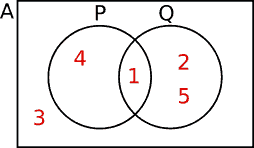A is a set containing 'n' elements. A subset P of A is chosen at random. The set A is reconstructed by replacing the elements of P. A subset Q of A is chosen again at random. Find the no of ways choosing p &q so that P intersection Q contains exactly 1 element.
All the subsets that are possible out of n elements = 2^(n) -1
No of ways P is chosen = 2^(n)-1 C1
Cardinality of |P|=no
No of ways Q is chosen = 2^(no)-1 C1 =
Then how to proceed
I wouldn't start that way, so I can't tell you how to proceed from there.
For one thing, P could be all of A, or it could be empty (ignoring for the moment the requirement that the intersection is nonempty), so your count is wrong, if it matters. Second, I have no idea what you are doing with Q. Are you thinking that is a subset of P, rather than of A?
The first thing to do, as always, is to be sure what the problem says. The reconstruction idea seems confusing; I think all it's saying is something like this: If you pick a subset P of A (not removing them, just choosing), and then I independently choose a subset Q of A, and it turns out that the intersection of P and Q contains exactly one element, how many ways could that happen?
I'd start by picturing a Venn diagram, and counting how many ways there are to fill it in (that is, placing the n elements of A into the diagram). If nothing else, that makes it easier to picture what is being done. But I think it leads to a very simple answer.

